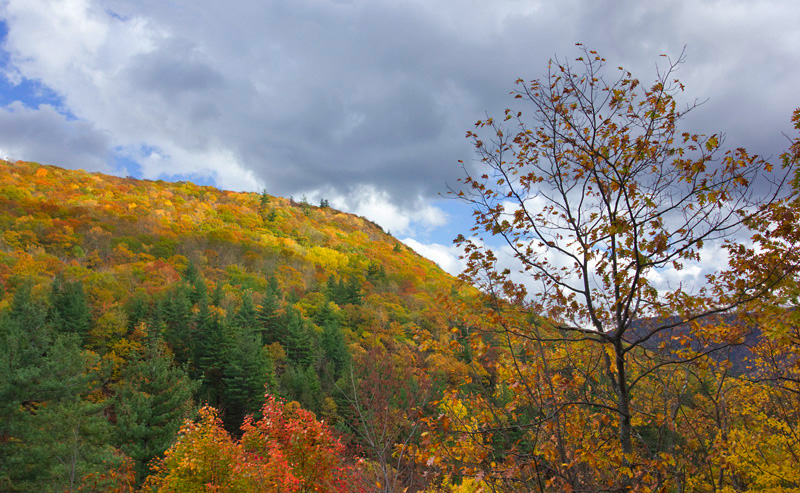
- The Catskill Mountains -
Kaaterskill Falls and the Land of Rip Van Winkle
Near Palenville, New York
en.wikipedia.org/wiki/Kaaterskill_Falls

In addition to their obvious scenic beauty, the Catskill Mountains also captured my interest for their relationship to early American art and literature.
It was among these mountains that the 19th Century painters of the Hudson River School first developed their uniquely American style of landscape painting, which has had a huge influence on my own work. Thomas Cole, the founder of the movement, and his young student Frederic Church, who went on to become the brightest star of the group, used to roam these hills in search of scenic inspiration. So, in some locations here, I was literally walking in the footsteps of these distant mentors of mine.
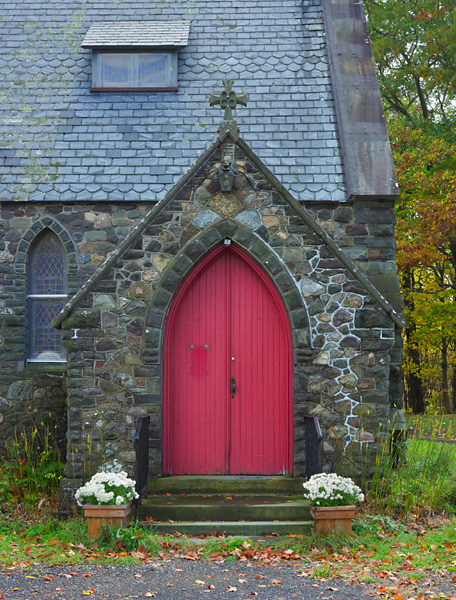
Entry to a church in the town of Palenville
These mountains are also the setting for "Rip Van Winkle," one of Washington Irving's better-known tales. As a fan of Irving, I found it intriguing to visit the places that informed his imagination. The central character of the story lives in a village at the foot of the Catskills. After venturing into the mountains for a walk, he falls asleep beneath a tree, has a supernatural encounter with the spirits of early Dutch explorers of the region, then awakens and returns home to find that 20 years have elapsed during his slumber. This is a theme that Irving borrowed from Celtic folklore, in which mortals sometimes stray into the underground territory of the fairies, and return home to find that many years have passed during an experience which, under the enchantment of the fairy realm, had seemed to occupy no more than an hour's time.
The town of Palenville promotes itself as the legendary village of Rip Van Winkle's residence. Being the town closest to the mountains, this is plausible enough, although Irving admitted that he had never personally visited the Catskills when he wrote the story in 1819, and the village is never identified by name in the text. But it's all good enough for me, and the location is perfect. In fact, as you drive on Route 23A into Catskills State Park, you'll encounter this sign just outside of town:
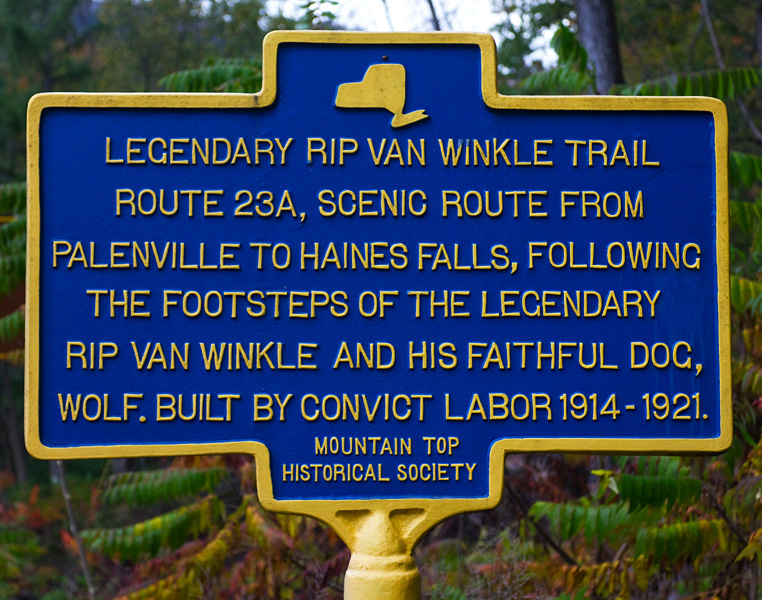
Several miles into the mountains, you'll arrive at the parking lot for the trailhead to Kaaterskill Falls. You don't have to go far to see falling water, however, since Bastion Falls is readily visible from the road at the trailhead. The water was flowing heavily at the time of my visit, due to heavy rain that had fallen all the previous day and night, and it made for quite a scene:
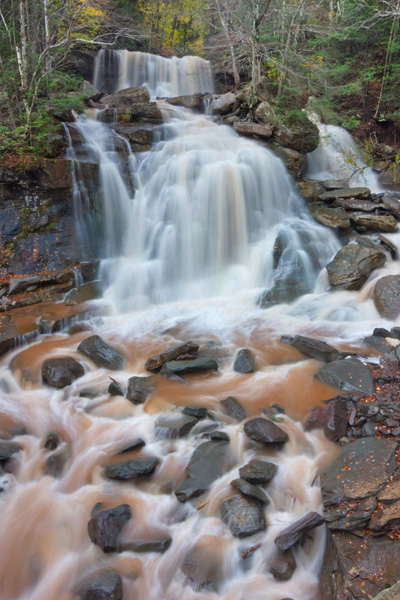
Below, a small stream flowing across the trail to Kaaterskill Falls:
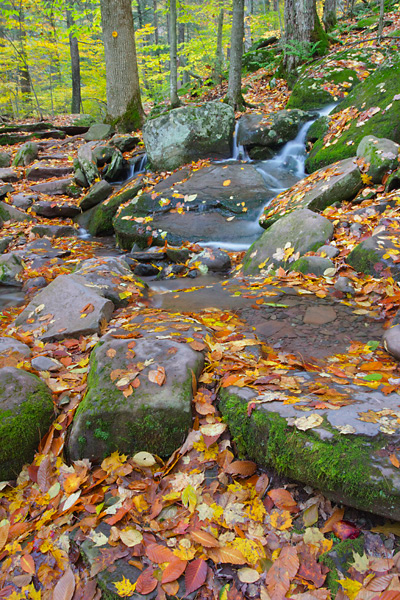
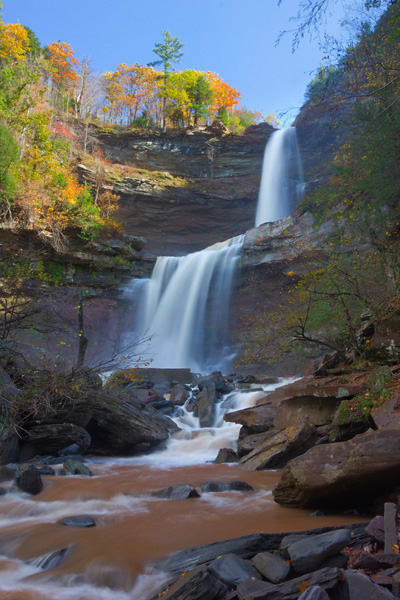
The double cascade of Kaaterskill Falls, totaling 260 feet in height. This is the tallest waterfall in the state of New York, and was one of American's first tourist attractions.
As a side note, New York had been first occupied by Dutch settlers in the 1600's, and "kill" happens to be the Dutch word for stream, which explains why it appears so frequently in place names of the region.
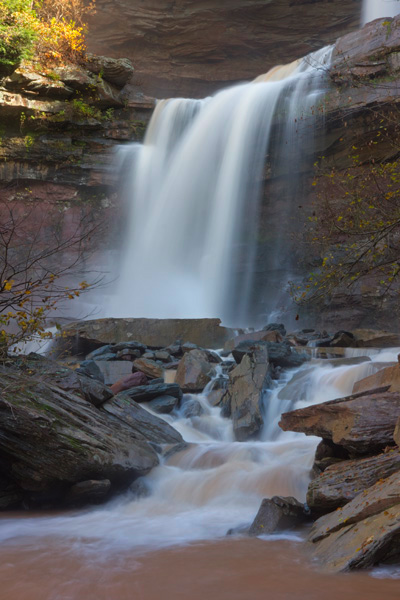
A peculiar legend is associated with Kaaterskill Falls, involving the ghost of a dog who is said to have leapt to its death from the top of the falls in 1868; the tragic incident was witnessed by the dog's owner, who supposedly carved an epitaph to his loyal canine on a boulder near the base of the falls. I'm not entirely convinced that even the non-supernatural elements of this story are believable, so I had hoped to see the epitaph for myself - but since the carving is located on the far side of the stream, and the water was too high to permit a crossing at the time of my visit, I was unable to locate it. However, an entry in the New York Times of September 1st, 1901, gave an account of the incident and of the legend that sprang from it - I've here transcribed the text from a copy in the online archives of the paper:
A Faithful Dog's Epitaph
"A tragic story of a dog's devotion and faithfulness to his master, even unto death, is graven deep on a tablet hewn in the face of a rock beside the Kaaterskill Falls, at the time of the occurrence thirty-three years ago. It has interested many thousands of visitors to this beautiful and romantic region of the Catskills, who have made the descent into the wood-lined abysm where the falls plash and murmur and extend in a crystal brook that serpentines among the boulders to a more level course in Sunset Gorge at the foot of High Peak Mountain. The epitaph is as follows:
To the Memory of
VITE,
the Bayard of Dogs,
Sans Peur et Sans Reproche.*
Killed
June 19, 1868, by Leaping from the
Platform Above the Falls to
the Rocks Beneath.
This Epitaph is Inscribed to His
Memory by His Friends
J.S.McK. - W.E.P. - J.K.M.
*{The epitaph here refers to Pierre Terrail, a 16th-Century French soldier, also called the Chevalier de Bayard, who was regarded as the highest example of chivalry and good character, le chevalier sans peur et sans reproche, or "the knight without fear and beyond reproach"}.
"Vite was a Spaniel. His master, with his friends, went to the foot of the falls, leaving the dog above. The animal could not see them, as they made the precipitous descent, and was in great distress when at last they emerged from the woods into the open on the rocks, nearly 280 feet below. As his master appeared, Vite barked for joy, and perceiving no other way to reach him, unhesitatingly made the fearful leap.
Vite's feat has been embellished by legend in the recounting of it by the few denizens of the mountain solitudes who abide there from year's end to year's end. They tell how toward midnight on every June 19 the ghost of the spaniel haunts the vicinity of the falls, and how, as the hands of the clock mark the witching hour, a succession of short, sharp barks is heard, followed by the flight of the apparition through the air over the falls into the precipice, whence arises a prolonged howl which echoes and re-echoes among the Cimmerian recesses of Sunset Gorge and the forest-clad slope of High Peak Mountain.
However this may be - for there are those who solemnly asseverate that they have both seen the apparition and heard its howling - the fame of Vite's exploit has spread beyond the Atlantic, borne to Europe by travelers who have read the epitaph on the rock..."
Weird, huh?
To conclude, I offer you this final photo, depicting the forest on this blustery October day - with the leaves fluttering madly in the wind, I used a longer exposure to permit motion blur, resulting in an image that seems to capture a sense of the enchanted quality of the place:
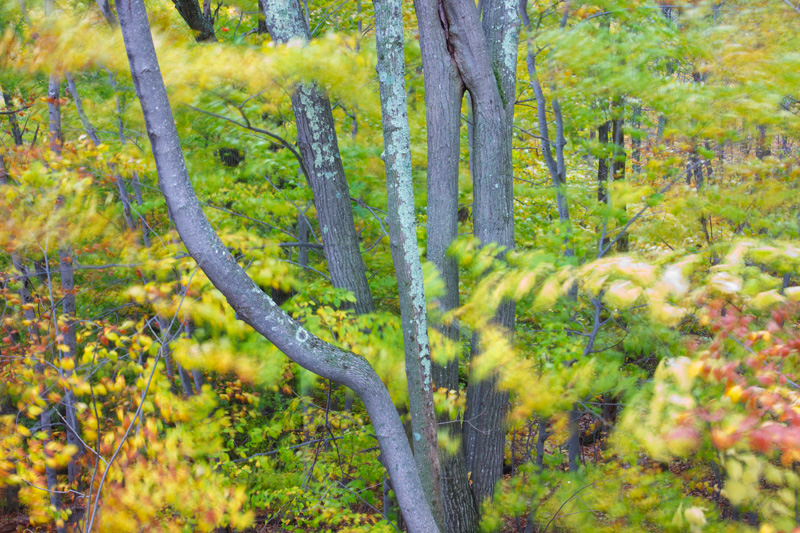
or